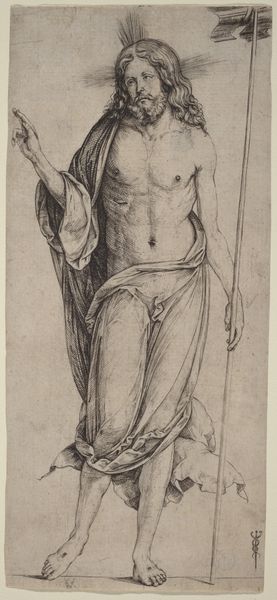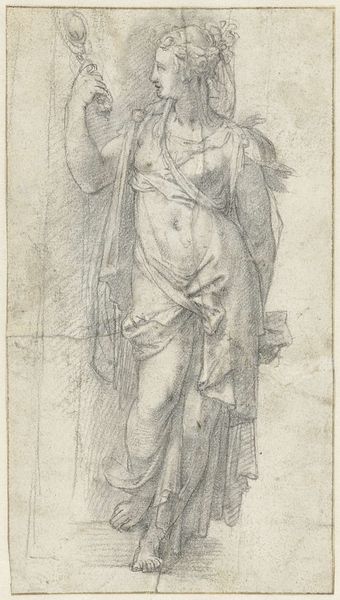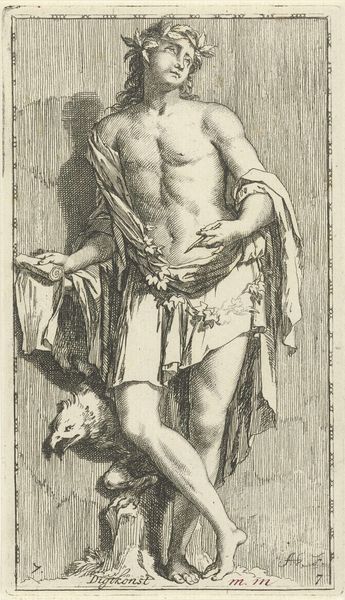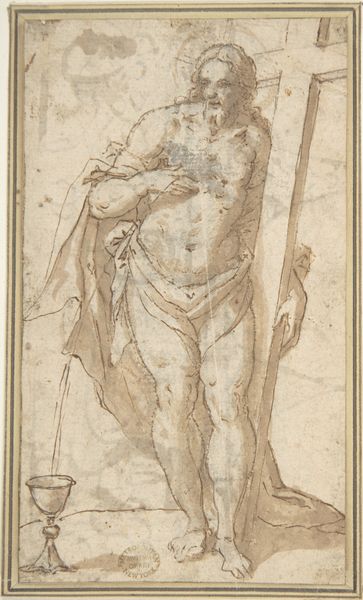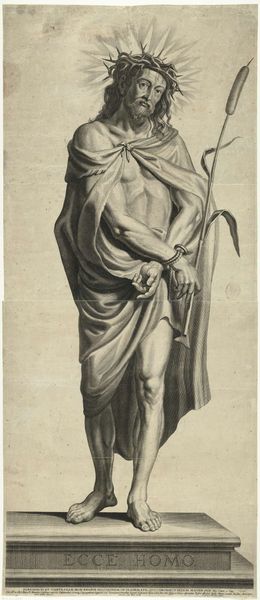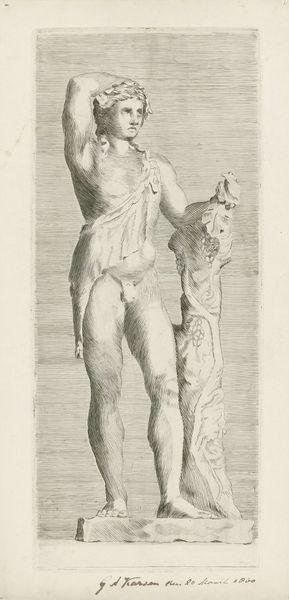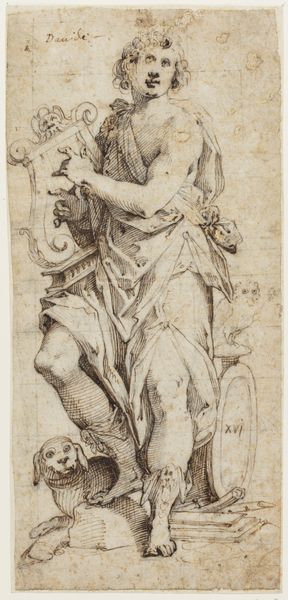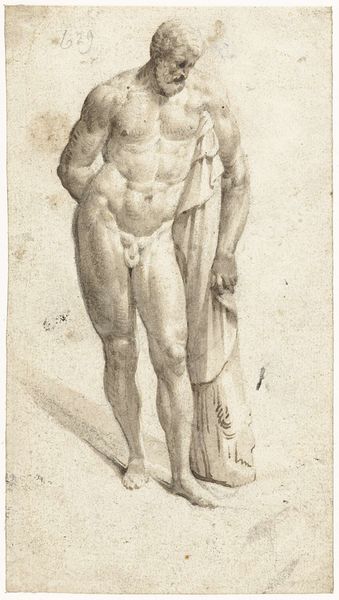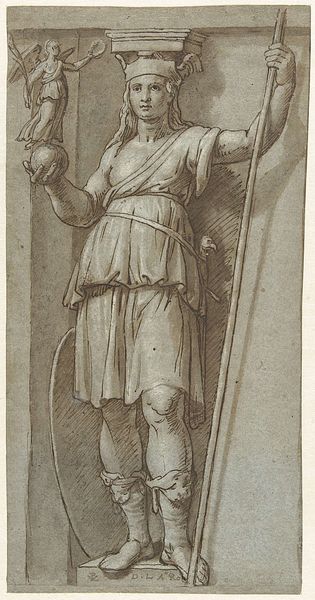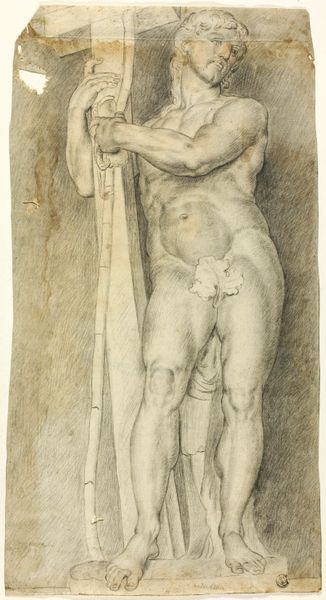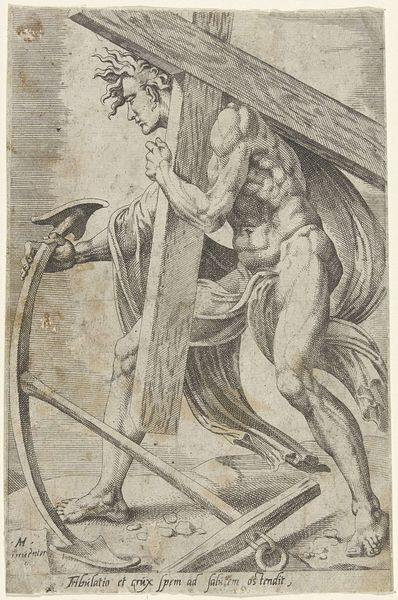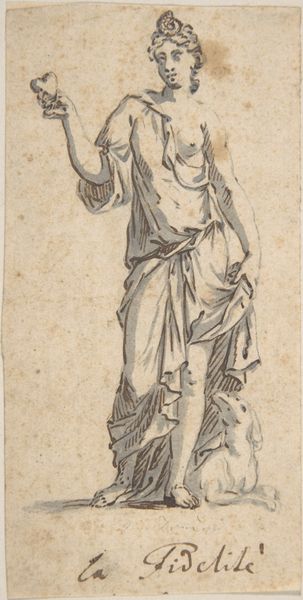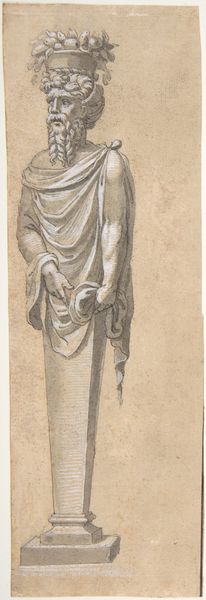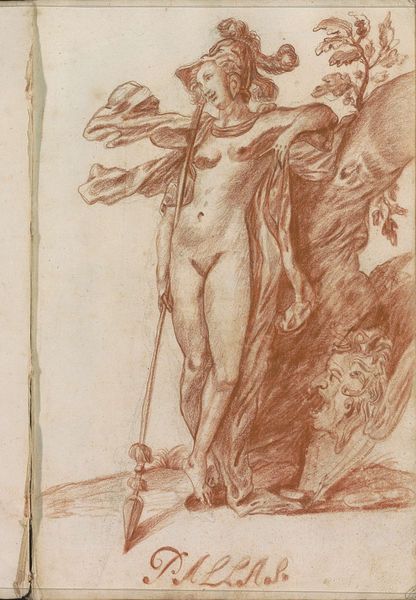
print, intaglio, engraving
#
portrait
# print
#
intaglio
#
figuration
#
pencil drawing
#
line
#
history-painting
#
italian-renaissance
#
engraving
Dimensions: height 188 mm, width 88 mm
Copyright: Rijks Museum: Open Domain
Curator: My initial impression of "Staande Christus als Salvator Mundi" from 1503-1509 by Jacopo de' Barbari is its starkness. It's hard, almost brittle, yet the engraving captures something monumental. Editor: Brittle is a good word. Look at how the fine, repetitive lines are worked to create light and shadow. It almost looks like textile weavings in parts, especially in the draped cloth, where the threads and folds define the figure. Curator: Indeed. De' Barbari's use of engraving here shows a real understanding of its reproductive capacity. Prints like this, in their time, allowed for a far wider dissemination of religious imagery and, with that, ideologies. Who had access to such imagery, and where would this have been displayed? That would have strongly shaped the image's message. Editor: Absolutely, the labor involved in the design and creation of the copper plate for this intaglio print shouldn't be underestimated. Someone dedicated a significant amount of time, with precise tools, to rendering Christ’s form. Look at the almost diagrammatic understanding of anatomy present here. Consider, too, that producing such works might involve apprenticeships, the economy of print shops, and all these aspects would dictate the visual rhetoric presented. Curator: And that rhetoric positions Christ quite purposefully. We are meant to see the savior, wounds displayed clearly. A sort of propaganda meant to shape one's thoughts about faith and religious institutions in the context of their impact on society. Editor: It goes beyond mere representation. The physical process of creating and reproducing this image implicates an entire network of producers and consumers, all participating in the act of seeing and understanding Christ’s suffering, then displaying it—in a church, home, or other institution, perhaps to influence. This reveals how art in general impacts the labor economy. Curator: Thinking about it in terms of visibility and distribution has definitely broadened my view of the engraving. I will need to reflect more deeply about distribution and what it meant for its intended audiences. Editor: Me too. The confluence of craft, production and circulation reveals new meanings in what could have easily been overlooked as just another devotional piece.
Comments
No comments
Be the first to comment and join the conversation on the ultimate creative platform.
